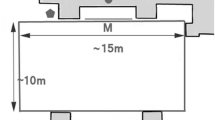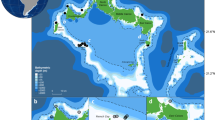Abstract
Fish have a well-developed sense of taste and can evaluate the palatability of grasped food and reject it if food do not match an expected quality. In the present study the food retention time was measured in Eurasian minnow Phoxinus phoxinus for agar pellets flavoured with amino acids (L-alanine, L-proline, L-phenylalanine; 0.1 M) by analysing video recordings. About 50% of the pellets were rejected within less than 145 ms. The shortest periods for pellet retention were within 42 ms. The mean values vary between 260 and 370 ms for pellets flavoured with amino acids but no significant difference was found between rejection time for pellets with palatable alanine, aversive phenylalanine and ineffective proline. It means that rejection time is not related to the palatability of grasped food item and indicates that there is a short-cut in the neurophysiological pathways that makes the fish reject the grasped food items with minimum delay. The fast rejection helps fish to decrease time for unproductive efforts and increase the possibilities to find valuable food after new search.






Similar content being viewed by others
REFERENCES
Atema, J., Chemical senses, chemical signals and feeding behavior in fish, in Fish Behavior and its Use in the Capture and Culture of Fishes, Bardach, J.E., Eds., Manila: Int. Center Living Aquat. Resour. Manage., 1980, pp. 57–101.
Bemis, W.E., Findeis, E.K., and Grande, L., An overview of Acipenseriformes, Environ. Biol. Fish., 1997, vol. 48, pp. 25–41.
Breslin, P.A. and Huang, L., Human taste: peripheral anatomy, taste transduction, and coding, Adv. Otorhinolaryngol., 2006, vol. 63, pp.152–190.
Coughlin, D.J. and Strickler, J.R., Zooplankton capture by a coral reef fish: an adaptive response to evasive prey, Environ. Biol. Fish., 1990, vol. 29, pp. 35–42.
Essler, H. and Kotrschal, K., High resolution analysis of swim path patterns of intact and olfaction-deprived minnows (Phoxinus phoxinus) stimulated with food and potential predator odour, J. Fish Biol., 1994, vol. 45, pp. 555–567.
Fehrer, J.R. and Raab, D., Reaction time to stimuli masked by metacontrast, in Information-Processing Approaches to Visual Perception, Haber, R.N., Eds., New York: Holt, Rinehart and Winston, 1969, pp. 117–121.
Finger, T.E., Feeding patterns and brain evolution in ostariophysean fishes, Acta Physiol. Scand., 1997, vol. 161, suppl. 638, pp. 59–66.
Frisch von, K., Über einen Schreckstoff der Fischhaut und seine biologische Bedeutung, Z. Vergl. Physiol., 1941, vol. 29, no. 1, pp. 46–145.
Glaser, D., Zum Verhalten blinder Fische, Z. Tierpsychol., 1968, vol. 25, no. 6, pp. 648–658.
Halpern, B.P., Constraints imposed on taste physiology by human taste reaction time data, Neurosci. Biobehav. Rev., 1986, vol. 10, no. 2, pp. 135–151.
Halpern, B.P. and Tapper, D.N., Taste stimuli: quality coding time, Science, 1971, vol. 171, pp. 1256–1258.
Kasumyan, A.O., Gustatory reception and feeding behavior in fish, J. Ichthyol., 1997, vol. 37, no. 1, pp. 72–86.
Kasumyan, A.O. and Marusov, E.A., Behavioral responses of intact and long-time olfactory deprived European minnows, Phoxinus phoxinus (Cyprinidae), to free amino acids, J. Ichthyol., 2003, vol. 43, no. 7, pp. 528–538.
Kasumyan, A.O. and Mikhailova E.S., Taste preferences and feeding behavior of three-spined stickleback Gasterosteus aculeatus of populations of basins of the Atlantic and Pacific oceans, J. Ichthyol., 2014, vol. 54, no. 7, pp. 453–475.
Kasumyan, A.O. and Prokopova, O.M., Taste preferences and the dynamics of behavioral taste response in the tench Tinca tinca (Cyprinidae), J. Ichthyol., 2001, vol. 41, no. 8. pp. 640–653.
Kasumyan, A.O. and Sidorov, S.S., Individual variability of taste preferences in the minnow Phoxinus phoxinus, J. Ichthyol., 2002, vol. 42, suppl. 2, pp. 241–254.
Kasumyan, A.O. and Sidorov, S.S., Taste preferences of the brown trout Salmo trutta from three geographically isolated populations, J. Ichthyol., 2005, vol. 45, no. 7, pp. 111–123.
Kasumyan, A.O. and Sidorov, S.S., Behavior of food objects testing by taste in the carp Cyprinus carpio in the norm and at chronic anosmia, J. Ichthyol., 2010, vol. 50, no. 11, pp. 1043–1059.
Kasumyan, A.O. and Sidorov, S.S., Effects of the long term anosmia combined with vision deprivation on the taste sensitivity and feeding behavior of the rainbow trout Parasalmo (=Oncorhynchus) mykiss, J. Ichthyol., 2012, vol. 52, no. 1, pp. 109–119.
Kelling, S.N. and Halpern, B.P., Taste judgments and gustatory stimulus duration: simple taste reaction times, Chem. Sens., 1987, vol. 12, no. 4, pp. 543–562.
Koch, C., The movie in your head, Sci. Am. Mind., 2005, vol. 16, pp. 58–63.
Krause, J. and Ruxton, G.D., Living in Groups, Oxford: Oxford Univ. Press, 2002.
Magurran, A.E., The development of shoaling behavior in the European minnow, Phoxinus phoxinus, J. Fish Biol., 1986, vol. 29, suppl. A, pp. 159–169.
Magurran, A.E., Acquired recognition of predator odor in the European minnow (Phoxinus phoxinus), Ethology, 1989, vol. 82, pp. 216–223.
Magurran, A.E. and Pitcher, T.J., Foraging, timidity and shoal size in minnows and goldfish, Behav. Ecol. Sociobiol., 1983, vol. 12, no. 2, pp. 147–152.
Magurran, A.E., Oulton, W., and Pitcher, T.J., Vigilant behaviour and shoal size in minnows, Z. Tierpsychol. Bd., 1985, vol. 67, pp. 167–178.
Mikhailova, E.S. and Kasumyan, A.O., Taste preferences and feeding behavior in nine-spined stickleback (Pungitius pungitius) in three geographically distant populations, J. Ichthyol., 2015, vol. 55, no. 5, pp. 679–701.
Mikhailova, E.S. and Kasumyan, A.O., Orosensory food testing in fish: chronology of behavior, Biol. Bull., 2016, vol. 43, no. 4, pp. 318–328.
Nyberg, D.W., Prey capture in the largemouth bass, Am. Midl. Nat., 1971, vol. 86, no. 1, pp. 128–144.
Pavlov, D.S. and Kasumyan, A.O., The structure of the feeding behavior of fishes, J. Ichthyol., 1998, vol. 38, no. 1, pp. 116–128.
Sasko, D.E., Dean, M.N., Motta, P.J., and Hueter, R.E., Prey capture behavior and kinematics of the Atlantic cownose ray, Rhinoptera bonasus, Zoology, 2006, vol. 109, pp. 171–181.
Schlegel, T. and Schuster, S., Small circuits for large tasks: high-speed decision-making in archerfish, Science, 2008, vol. 319, no. 5859, pp. 104–106.
Sibbing, F.A., Osse, J.W. M., and Terlouw, A., Food handling in the carp (Cyprinus carpio): its movement patterns, mechanisms and limitations, J. Zool., 1986, vol. 210, no. 2, pp. 161–203.
Simon, S.A., de Araujo, I.E., Stapleton, J.R., and Nicolelis, M.A.L., Multisensory processing of gustatory stimuli, Chem. Percept., 2008, vol. 1, no. 1, pp. 95–102.
Spector, A.C., Redman, R., and Garcea, M., The consequences of gustatory nerve transaction on taste-guided licking of sucrose and maltose in the rat, Behav. Neurosci., 1996, vol. 110, pp. 1096–1109.
Stapleton, J.R., Lavine, M.L., Wolpert, W.L., Nicolelis, M.A.L., and Simon, A.S., Rapid taste responses in the gustatory cortex during licking, J. Neurosci., 2006, vol. 26, no. 15, pp. 4126–4138.
Travers, J.B., Dinardo, L.A., and Karimnamazi, H., Motor and premotor mechanisms of licking, Neurosci. Biobehav. Rev., 1997, vol. 21, pp. 631–647.
Uchida, N. and Mainen, Z.F., Speed and accuracy of olfactory discrimination in the rat, Nat. Neurosci., 2003, vol. 6, pp. 1224–1229.
Vinogradskaya, M.I., Mikhailova, E.S., and Kasumyan, A.O., Taste preferences, orosensory food testing, and sound production during feeding by the pearl gourami Trichopodus leerii (Osphronemidae), J. Ichthyol., 2017, vol. 57, no. 3, pp. 445–457.
Author information
Authors and Affiliations
Corresponding author
Additional information
The article is published in the original.
Rights and permissions
About this article
Cite this article
Kasumyan, A.O., Mikhailova, E.S. Rapid Gustatory Food Evaluation in Fish. J. Ichthyol. 58, 916–926 (2018). https://doi.org/10.1134/S0032945218060073
Received:
Published:
Issue Date:
DOI: https://doi.org/10.1134/S0032945218060073




